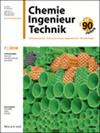利用大气微波等离子体工艺从CO2中生成CO
IF 1.6
4区 工程技术
Q3 ENGINEERING, CHEMICAL
引用次数: 0
摘要
随着二氧化碳水平的上升和气候变化,寻找化石燃料的替代品至关重要。一个有吸引力的选择是通过大气微波等离子体过程将CO₂转化为CO和O₂。该研究通过增加微波功率和CO₂流量来评估转换和能源效率。功率和CO₂流量变化,转换测量使用傅里叶变换-红外光谱,质谱和气体分析。在1.1 eV分子−1的比能量输入下,最大转化率达到21.1%,突出了该方法有效利用CO₂的潜力。本文章由计算机程序翻译,如有差异,请以英文原文为准。

CO Generation from CO2 Using an Atmospheric Microwave Plasma Process
With rising CO₂ levels and climate change, finding alternatives to fossil fuels is essential. One attractive option is converting CO₂ into CO and O₂ via an atmospheric microwave plasma process. This study evaluates conversion and energy efficiency by increasing microwave power and CO₂ flow. Power and CO₂ flow were varied, with conversion measured using Fourier transform-infrared spectroscopy, mass spectrometry, and gas analysis. A maximum conversion of 21.1 % was achieved at a specific energy input of 1.1 eV molecule−1, highlighting the potential of this approach for efficient CO₂ utilization.
求助全文
通过发布文献求助,成功后即可免费获取论文全文。
去求助
来源期刊

Chemie Ingenieur Technik
工程技术-工程:化工
CiteScore
3.40
自引率
15.80%
发文量
601
审稿时长
3-6 weeks
期刊介绍:
Die Chemie Ingenieur Technik ist die wohl angesehenste deutschsprachige Zeitschrift für Verfahrensingenieure, technische Chemiker, Apparatebauer und Biotechnologen. Als Fachorgan von DECHEMA, GDCh und VDI-GVC gilt sie als das unverzichtbare Forum für den Erfahrungsaustausch zwischen Forschern und Anwendern aus Industrie, Forschung und Entwicklung. Wissenschaftlicher Fortschritt und Praxisnähe: Eine Kombination, die es nur in der CIT gibt!
 求助内容:
求助内容: 应助结果提醒方式:
应助结果提醒方式:


